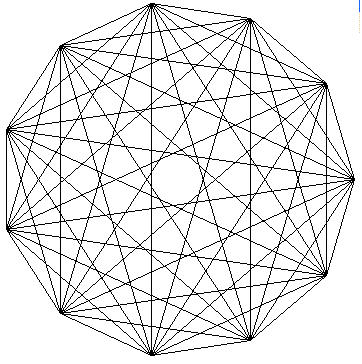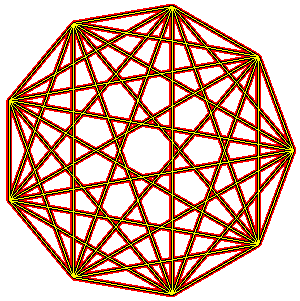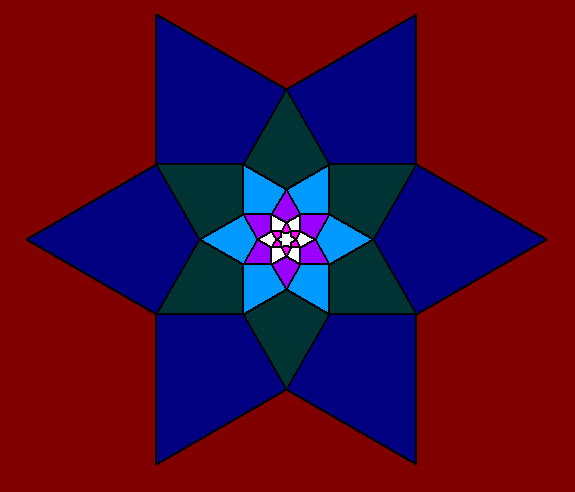Pentagonal Star
Here is the code for a pentagonal star. Triangles and squares won't produce regular stellations(Why?).
cs ht repeat 5 [forward 120 right 360*2/5]
This works as follows:
- cs ht clears the screen and hides the turtle.
- repeat 5 makes the program do the stuff in side the brackets 5 times.
- forward 120 draws a straight line 120 pixels long
- right turns the turtle through the angle 360*2/5
- 2 because you draw the first line of the stellation to the second vertex of the pentagon not the first.
- 5 because you are working on a five sided polygon.
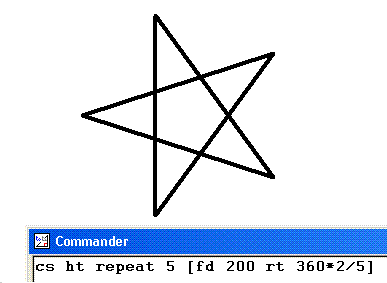
Drawing the Star

Heptagonal Stars
The heptagon has two distinct stellations.

Nine Points
cs ht repeat 9 [fd 200 rt 360*2/9]
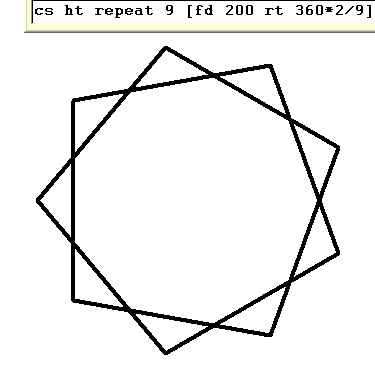
Eleven Points
cs ht repeat 11 [fd 200 rt 360*5/11]

Thirty One Points
cs ht repeat 31 [fd 200 rt 360*13/31]
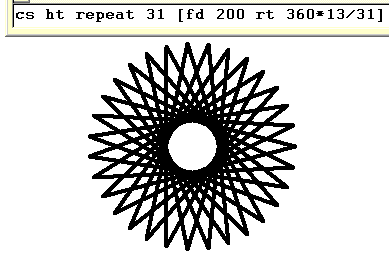
Tasks
Complete this table to show how many stellations there are for different polygons. Fill in the number of vertices and the start numbers which produce proper stellations. The first few rows have been done for you.
Vertices |
Start numbers of working stellations |
| 3 | none |
| 4 | none |
| 5 | 2 |
| 6 | none |
| 7 | 2,3 |
| 8 | |
| 9 | |
| 10 | |
| 11 | |
| 12 |
Questions
Why do some polygons allow stellations and not others?
Why do some polygons have more than one stellation?
Why are there some start numbers that don't work for a given polygon?
Which start numbers would produce stellations for a 19 sided polygon?
Harder Tasks
Write down the vertex order for the stellations of the heptagon. How does the start number relate to the number of orbits that you must make around the polygon before returning to the origin?
How could you use stellation to test for prime numbers?
What is the connection between the vertex number, the start number and their LCM (lowest common multiple)?
Fun Tasks
Use 'Print Screen' to drop your stellation into 'Paint' and then colour it in.
